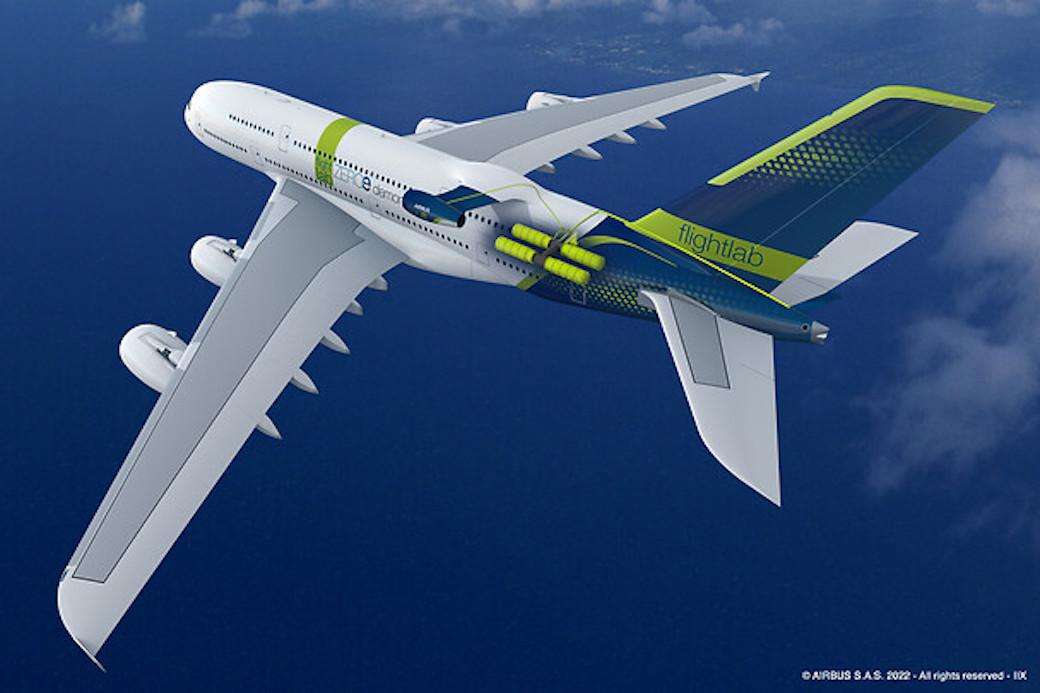
TOULOUSE—Airbus CEO Guillaume Faury warned Nov. 30 that the aerospace industry is not moving fast enough to address climate change and promote its drive toward emission-reductions targets.
“Ambition is not yet matched by action,” Faury told attendees at the Airbus Summit, an event focused on future technology hosted by the aircraft manufacturer in Toulouse. “But the clock is ticking,” Faury said. “It is difficult to overstate the scale of the energy challenge. The time for excuses is over; the time for action is now.”
Airbus has launched numerous technology initiatives, mainly in hydrogen and hybrid propulsion. Its ZEROe hydrogen aircraft is scheduled to enter commercial service in 2035. Airbus at this point has no plans for a new conventional aircraft that would precede ZEROe.
At the Toulouse event, Airbus presented new programs exploring hydrogen fuel cells and hybridization of the aircraft, among others. However, Faury said uncertainty about hydrogen supply “could be a reason to delay the launch of the program even if the technologies for the aircraft are ready.”
“I am impressed by how this sector has come together, but overall, it is a mixed picture,” Faury said.
In both the hydrogen and sustainable aviation fuels (SAF) areas, aviation is at least partially dependent on advances in other sectors. Faury stressed that “we need to have 10% of SAF by 2030.” The EU mandate is for just 5%, and currently substantially less than 1% of global fuel consumption is covered by SAF. Airbus aircraft are certified for 50% SAF use today, with Airbus aiming at certification of 100% SAF by 2030. Faury said “we will be leading by example [by investing] our own money.”
Airbus started out by studying three different concepts of ZEROe: a regional aircraft, a narrowbody and a blended-wing body. Glenn Llewellyn, VP for zero-emission aircraft, said the “blended-wing body is the least likely of the options by 2035.” Changing the propulsion system and the basic configuration of the aircraft in one single step would be “too much,” in his opinion. Instead, Airbus is aiming for a classic tube-and-wing concept “with a very different propulsion system.”
As for the hydrogen storage, Airbus tends toward putting two tanks behind the pressure bulkhead in the rear of the fuselage. Llewellyn said hydrogen aircraft are likely to be more expensive to operate than the cost levels airlines are used to today. “But not disruptively so,” he said.
Airbus’ move to also explore fuel-cell technology for ZEROe additionally is strategically relevant for engine manufacturers that can no longer assume to be on board. “But we could easily decide to partner on the engine,” Llewellyn said. Whether Airbus will go with fuel cells or direct hydrogen combustion is a decision for later. “We are not at that stage yet,” Llewellyn said.

Comments